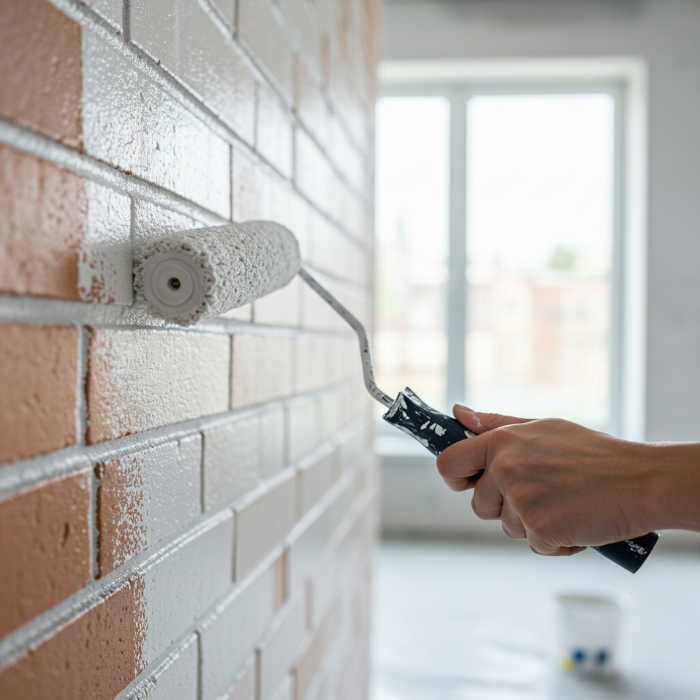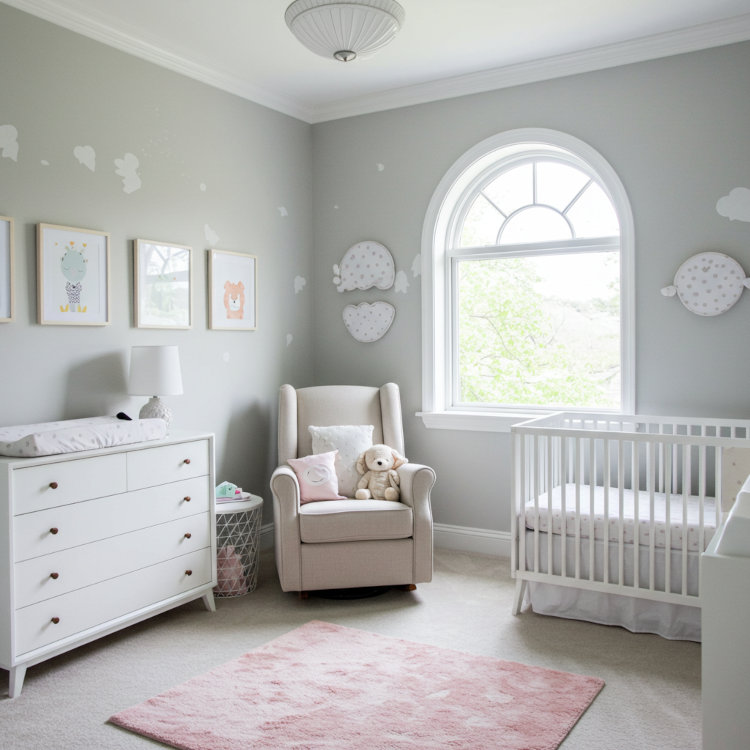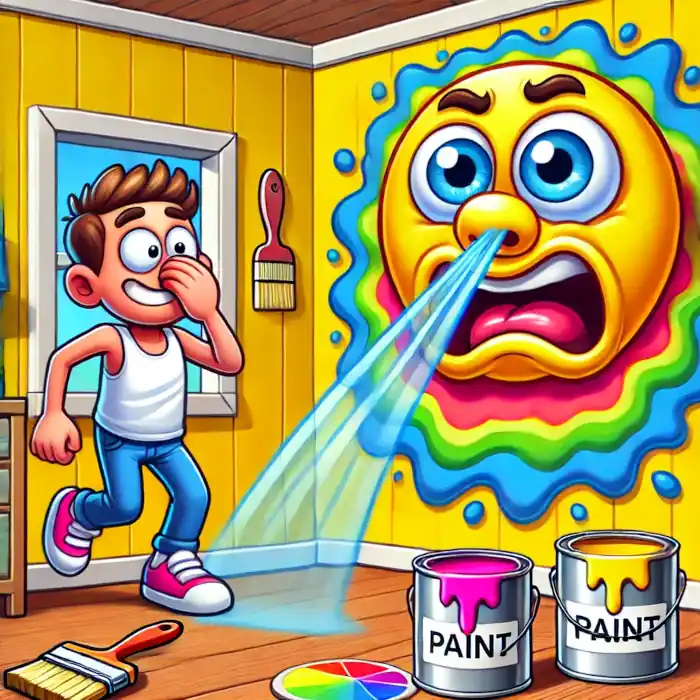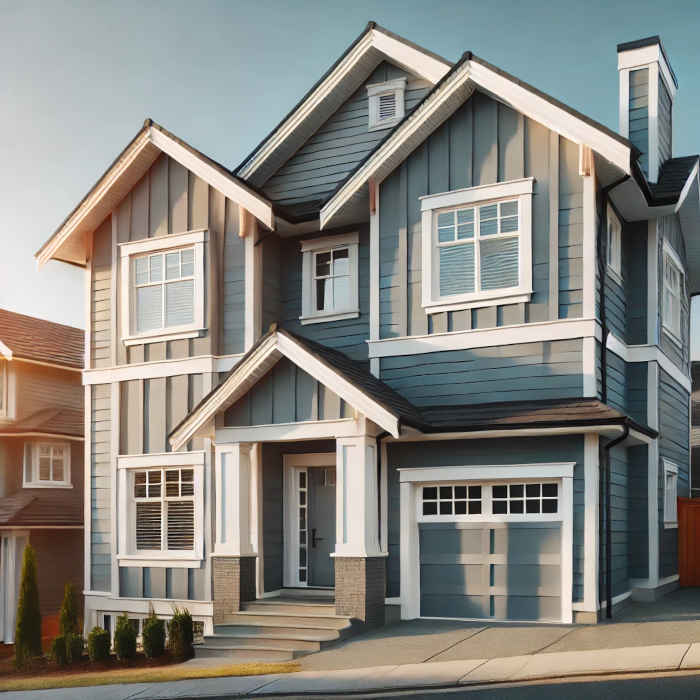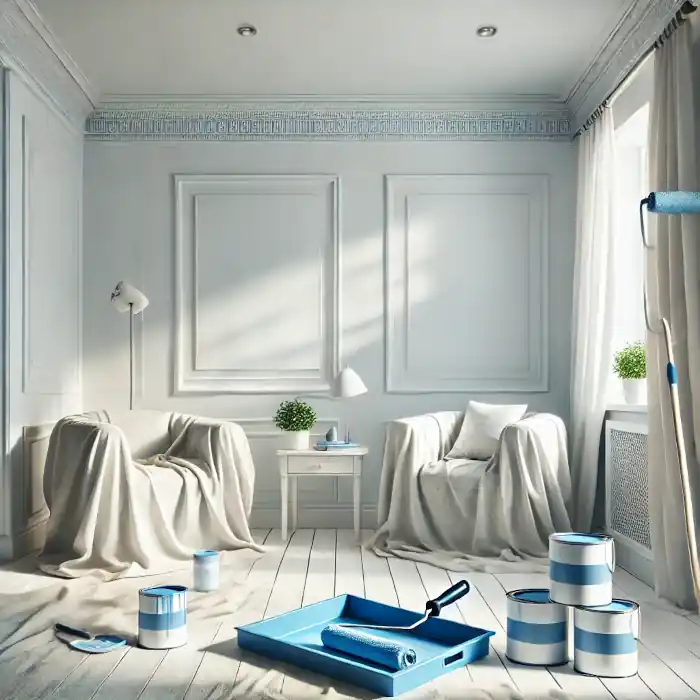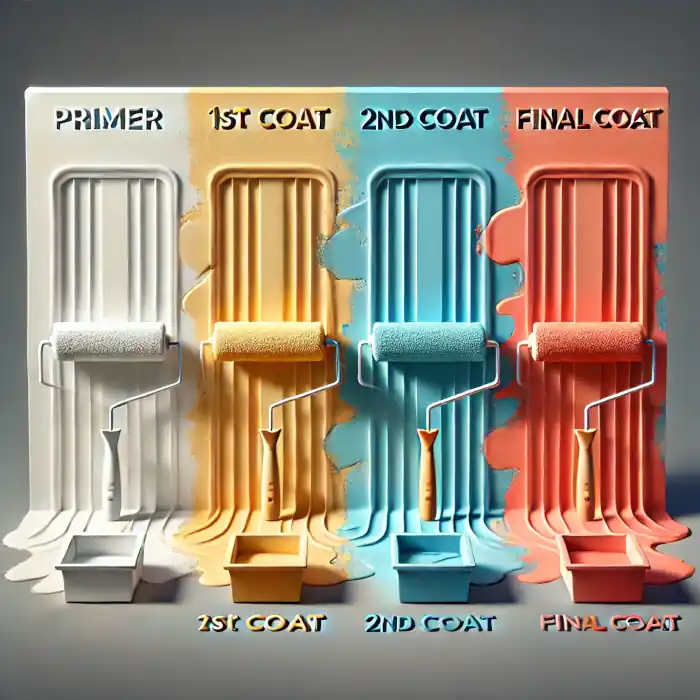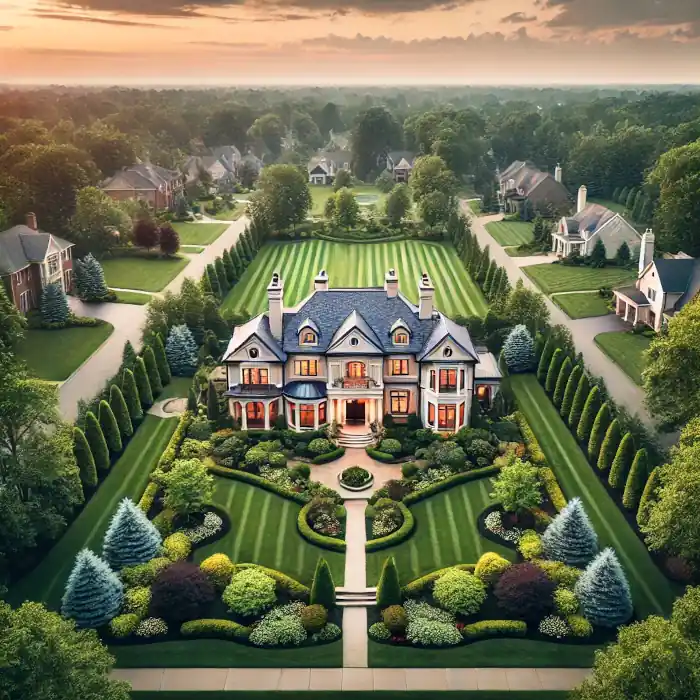As an Amazon Associate, I earn from qualifying purchases. Privacy Policy / Terms
Painting brick is one of the fastest ways to completely transform a space or exterior, breathing new life into a surface that can otherwise feel heavy, outdated, or overly rustic. Whether you’re modernizing your living room or refreshing the outside of your home, the right approach is crucial to achieving beautiful, lasting results. Brick is a tricky material—it’s porous, uneven, and often full of character—so it needs a little extra care and a lot of proper preparation.
Here’s a step-by-step guide to painting brick interiors and exteriors the right way.
Understand the Nature of Brick
Before grabbing a brush or roller, it’s important to know what you’re working with. Brick is highly absorbent. That means it soaks up moisture and paint differently than drywall or wood. If you skip essential steps like cleaning, sealing, or priming, the final result can end up blotchy, peeling, or even moldy.
Additionally, newer bricks tend to paint more easily than older, crumbling ones. Always assess the condition of your brick before you start—repairs might be needed first to ensure the surface is strong enough to hold paint.
Start with a Thorough Cleaning
Brick naturally collects dust, dirt, and sometimes mildew, especially on exteriors. Even indoor brick can gather soot or oils if it’s near a fireplace or in a kitchen. Painting over any of that grime traps it under the paint, leading to uneven adhesion and possible discoloration later on.
For interior brick, a stiff-bristle brush and a mix of warm water and mild detergent usually does the trick. For exteriors, you might need to power wash the surface. Just be careful—too much pressure can actually damage the brick and mortar. Allow the brick to dry completely before moving on. Depending on the weather, this can take up to 24 hours.
Repair Damages Before Painting
Look for cracks in the mortar joints, missing chunks, or damaged bricks. These imperfections can worsen over time, even under a layer of paint. Use a pre-mixed mortar patch or a silicone-based masonry filler to repair any gaps or crumbling areas. Give repairs ample time to cure, and once dry, lightly sand the patches to blend them into the surrounding surface.
This step is crucial: painting over damaged brick without repair will only highlight the flaws and shorten the life of your paint job.
Prime the Brick Properly
Brick needs a special primer designed for masonry or porous surfaces. A high-quality bonding primer will seal the brick and create an even surface that’s ready to accept paint.
Skipping primer is one of the biggest mistakes homeowners make when painting brick. Without it, the paint can soak unevenly, peel prematurely, or allow moisture to seep behind the surface—especially outdoors where temperature swings are extreme.
Use a roller designed for rough surfaces and back-brush the primer into the mortar lines to ensure full coverage. Depending on the brick and your chosen paint, one to two coats of primer may be needed.
Choose the Right Paint
Not all paints are created equal, especially when it comes to masonry. For interiors, 100% acrylic latex paint works beautifully. It’s durable, breathable, and easy to clean. Matte or eggshell finishes are common for a natural look, but you can go with a satin finish if you prefer a slight sheen.
Exterior brick needs something tougher—specifically, a masonry paint that’s designed to handle moisture, temperature fluctuations, and UV exposure. Elastomeric paints are a popular choice for exterior brick because they provide excellent coverage, expand and contract with the surface, and offer strong waterproofing.
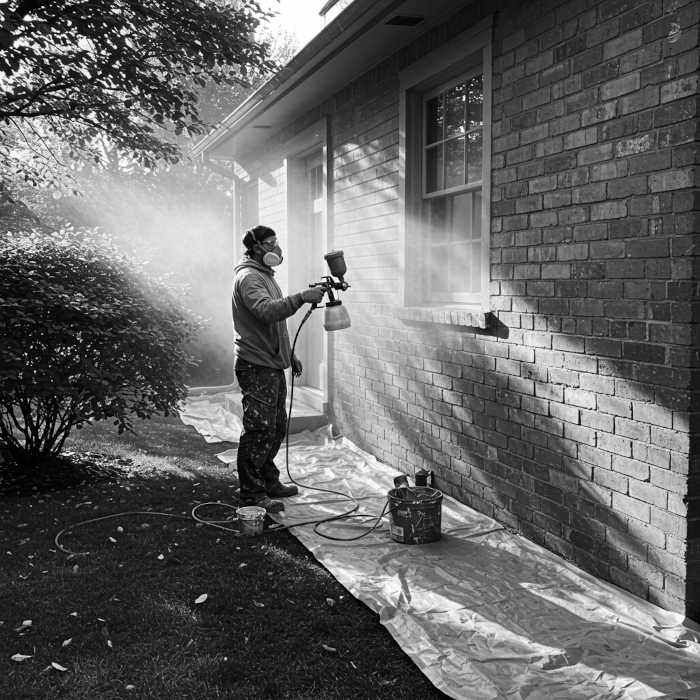
Regardless of the area, avoid oil-based paints. They can trap moisture inside the brick, leading to long-term damage.
Application Techniques for a Professional Look
Painting brick requires a different mindset than painting a wall. You’ll want to use thick-nap rollers (at least ¾ inch) or masonry brushes that can get into all the nooks and crannies.
Work in small sections, pushing the paint deep into the mortar joints as you go. After rolling, go back with a brush to “cut in” around edges, windows, or awkward surfaces. This back-and-forth method ensures full, even coverage across the highly textured surface.
For larger exterior projects, a paint sprayer can speed things up dramatically and provide a beautifully even coat. Just remember to mask off windows, landscaping, and trim very carefully before spraying.
You’ll likely need two coats for a truly finished look, with proper drying time (usually 4 to 6 hours) between applications.
Special Considerations for Exteriors
Exterior brick painting isn’t just about good technique—it’s about timing, too. Never paint in extreme weather. Aim for a mild, dry day with temperatures between 50°F and 85°F. Humidity should be moderate; too much moisture in the air can mess with the curing process.
Additionally, consider your home’s moisture management. Painting brick seals its natural breathability to a degree, so if your house doesn’t have proper gutters, drainage, or waterproofing, you could be creating moisture issues down the road. Fix drainage issues before painting if needed.
Caring for Painted Brick
Once your project is complete, taking good care of your painted brick ensures it stays beautiful for years to come.
For interiors, regular dusting and occasional spot cleaning with a damp cloth is usually enough. Avoid harsh chemicals that can strip or dull the finish.
Exterior painted brick should be inspected yearly. Look for chips, peeling areas, or mildew. Quick touch-ups and gentle cleaning can help maintain the look and prevent bigger problems later on.
If you used high-quality materials and followed the proper preparation steps, a good exterior brick paint job can last 10-15 years, and interior brick can stay vibrant even longer.
Final Thoughts
Painting brick—whether indoors or out—can dramatically upgrade the character and style of your home. But it’s not a job you want to rush. Taking the time to clean, repair, prime, and use the right products will set you up for success.
Whether you’re aiming for a sleek, modern whitewashed fireplace or giving your exterior a bold, refreshed look, painting brick the right way ensures you’ll love the result for years to come.
Done right, a painted brick surface feels intentional, polished, and full of personality—a real statement feature that can transform your space from dated to dazzling.
Views Expressed Disclaimer
The views, opinions, and information presented in this article are for informational purposes only and do not necessarily reflect the official policies or positions of Chagrin Falls Painting. While every effort has been made to ensure accuracy, Chagrin Falls Painting is not liable for any errors, omissions, or decisions made based on the content provided. Readers are encouraged to consult professionals for specific advice or assistance related to their unique circumstances.


